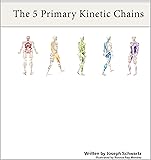
The Five Primary Kinetic Chains - Ebook

The core cylinder is made up of three pairings of muscle groups. These structures join into the thoracolumbar fascia. The top of the cylinder is capped with the thoracic diaphragm; the bottom with the pelvic diaphragm. As such, the breathing apparatus is also integral with storing and releasing elastic energy through the gait cycle.
Joseph Schwartz • The Five Primary Kinetic Chains - Ebook
The rotary action of the core cylinder allows for an efficient coiling and uncoiling of stored elastic energy.
Joseph Schwartz • The Five Primary Kinetic Chains - Ebook
The energy is spread across the entire fascial fabric and the result is seemingly effortless movement.
Joseph Schwartz • The Five Primary Kinetic Chains - Ebook
The Anterior Spiral is the release of elastic energy into the complementary movement.
Joseph Schwartz • The Five Primary Kinetic Chains - Ebook
The muscles of the core cylinder act on thoracolumbar fascia. With the thoracolumbar fascia impaired, the plantar aponeurosis becomes over worked.
Joseph Schwartz • The Five Primary Kinetic Chains - Ebook
The plantar aponeurosis is up-regulated, which in turn infers that another player is down-regulated.
Joseph Schwartz • The Five Primary Kinetic Chains - Ebook
The Posterior Spiral has four major fascial springs ~ the thoracolumbar fascia, the iliotibial band, the Achilles tendon, and the plantar aponeurosis.
Joseph Schwartz • The Five Primary Kinetic Chains - Ebook
The coiling and uncoiling of the spiral is a template of movement efficiency. The second mode of storing elastic energy is through the lengthening, or stretching of fascia or connective tissue.
Joseph Schwartz • The Five Primary Kinetic Chains - Ebook
Elastic energy is stored in the tissues by two mechanisms. One is the compression occurring as the tissues are coiling into a tight spring.